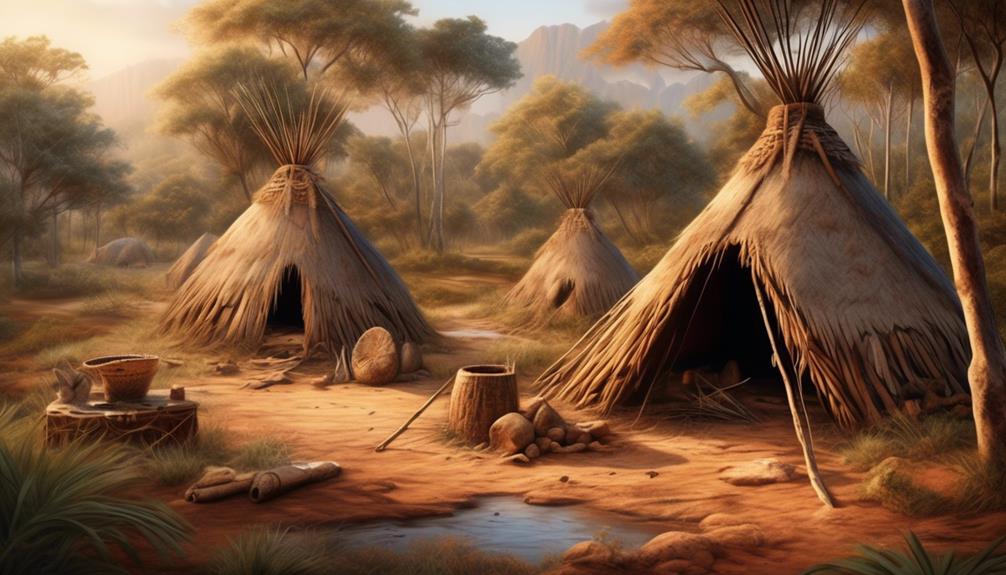In American society, we often oversimplify the distinction between native speakers and heritage speakers, assuming that the differences are clear-cut and easy to spot. However, the reality is much more complex and subtle.
The dynamic interplay between language acquisition and development, the influence of culture on identity, and the myriad linguistic challenges and advantages that both native and heritage speakers encounter, all contribute to a rich tapestry of experiences that shape how individuals communicate and integrate within their communities.
Understanding these intricacies not only fosters better communication and mutual understanding, but also has significant implications for educational support and opportunities.
Key Takeaways
- Social interaction plays a crucial role in language proficiency for both native speakers and heritage speakers.
- Heritage speakers have limited exposure to the language within their social environment, which can impact their language development and proficiency.
- Cultural values and social networks within the cultural community influence language use and retention for heritage speakers.
- Heritage speakers face linguistic challenges due to limited exposure and lack of formal education, but they also possess advantages such as early exposure and bilingualism.
Language Acquisition and Development
When comparing the language acquisition and development of native speakers and heritage speakers, it becomes evident that their experiences and proficiency levels differ significantly.
Social interaction plays a crucial role in the language proficiency of both native and heritage speakers. Native speakers typically acquire their language skills through constant exposure to the language in various social settings, such as interactions with family, friends, and the community. This continuous and diverse social engagement allows native speakers to develop a deep understanding of the language, including its nuances and cultural connotations.
In contrast, heritage speakers often have limited exposure to the language within their social environment, which can impact their overall language proficiency. Despite having some exposure to the language through family interactions, heritage speakers may not have the same breadth and depth of language usage as native speakers. As a result, their language development and proficiency may vary, often influenced by the level of social interaction and exposure to the language within their community.
Understanding these differences is essential for effectively addressing the language needs of both native and heritage speakers.
Cultural Influence and Identity

Comparing the language acquisition and development of native speakers and heritage speakers highlights the significant impact of cultural influence and identity on their proficiency levels. Cultural assimilation plays a crucial role in shaping the language proficiency of individuals, affecting their ability to retain their heritage language. This is evident in the following ways:
- Cultural Values: The cultural values ingrained in heritage speakers often influence their language use, affecting their proficiency levels. The preservation of cultural values through language contributes to language retention.
- Identity Formation: Heritage speakers' identity formation is closely tied to their cultural background, which impacts their language proficiency. The connection between cultural identity and language proficiency underscores the influence of cultural factors.
- Social Networks: The social networks of heritage speakers within their cultural community significantly influence their language retention. These networks provide opportunities for language use and cultural reinforcement.
- Generational Shifts: Cultural assimilation and changes across generations can impact the language retention of heritage speakers. The interplay between cultural assimilation and language retention reflects the complex nature of heritage language development.
Understanding the interplay between cultural influence and identity is crucial in comprehending the dynamics of language retention and proficiency levels among heritage speakers.
Linguistic Challenges and Advantages
Examining the linguistic challenges and advantages encountered by heritage speakers illuminates the intricate dynamics of language acquisition and proficiency within cultural contexts.
Heritage speakers often face challenges in achieving linguistic proficiency in both their heritage language and the dominant language of their environment. These challenges can stem from limited exposure to the heritage language, lack of formal education in the language, and societal pressures to assimilate to the dominant language.
However, heritage speakers also possess unique advantages, such as early exposure to the heritage language within the family unit, which can lead to a deep understanding of cultural nuances and idiomatic expressions. Additionally, bilingualism offers cognitive advantages, including enhanced problem-solving skills, multitasking abilities, and delayed onset of dementia.
The ability to effortlessly navigate between two languages is a valuable skill set that heritage speakers possess. Embracing bilingualism not only enriches individual linguistic repertoires but also contributes to the preservation of cultural heritage.
Understanding the linguistic challenges and advantages of heritage speakers is essential for developing effective educational and support systems to maximize the potential of these individuals in both their heritage language and the dominant language of their society.
Community Integration and Communication

To gain insight into the dynamics of language use and community integration, an examination of the communication strategies employed by heritage speakers within their respective cultural environments is imperative. Cultural adaptation plays a crucial role in the community integration of heritage speakers. It involves not only linguistic assimilation but also the understanding and adoption of cultural norms, values, and behaviors.
Social interaction serves as a cornerstone for heritage speakers to navigate their cultural environments. It allows them to engage with native speakers, participate in community activities, and develop a sense of belonging. Effective communication is essential for heritage speakers to establish meaningful connections within their communities. It involves not only language proficiency but also the ability to convey and interpret social cues, humor, and nonverbal communication.
The use of code-switching and language blending allows heritage speakers to bridge the gap between their heritage language and the dominant language of their community. This facilitates smoother communication and fosters a sense of inclusivity among all members of the community.
- Cultural adaptation is a multifaceted process encompassing linguistic assimilation and the adoption of cultural norms.
- Social interaction serves as a cornerstone for heritage speakers to navigate their cultural environments and develop a sense of belonging.
- Effective communication involves language proficiency, the ability to interpret social cues, and the use of code-switching to bridge language barriers.
- Language blending facilitates smoother communication and fosters inclusivity within the community.
Educational Implications and Support
Educational institutions must prioritize comprehensive support systems for heritage speakers to enhance their language proficiency and cultural identity. Language support programs tailored to the specific needs of heritage speakers can significantly impact their academic performance. Research indicates that heritage speakers often face unique linguistic challenges in educational settings, including vocabulary gaps, limited formal writing skills, and difficulties with academic register. Therefore, educational support should encompass targeted language development initiatives, such as bilingual education programs, heritage language classes, and linguistic accommodations in mainstream courses.
Additionally, fostering a supportive environment that values and integrates the heritage language and culture into the curriculum can positively influence the academic performance and overall well-being of heritage speakers.
Furthermore, it's crucial for educational institutions to provide professional development opportunities for educators to enhance their understanding of heritage speakers' linguistic and cultural needs. This can lead to the implementation of effective instructional strategies that cater to the diverse language backgrounds present in the classroom. By acknowledging and addressing the specific linguistic challenges faced by heritage speakers, educational institutions can create an inclusive and empowering learning environment that supports the academic success of all students.
Frequently Asked Questions
What Are Some Common Misconceptions About Heritage Speakers and Their Language Abilities?
There are many misconceptions about heritage speakers and their language abilities. These misconceptions often stem from a lack of understanding of the unique challenges and strengths that heritage speakers bring to language acquisition.
It's important to recognize that heritage speakers have a deep cultural identity tied to their language and are instrumental in language preservation efforts.
Acknowledging these factors is crucial in accurately assessing and supporting heritage speakers in their language development.
How Do Heritage Speakers Maintain and Pass on Their Language and Cultural Heritage to Future Generations?
In maintaining and passing on language and cultural heritage, heritage speakers play a crucial role. Language preservation is achieved through everyday interactions and storytelling, ensuring that future generations grasp the richness of their cultural identity.
What Are Some of the Unique Challenges Faced by Heritage Speakers in Maintaining Their Language Skills in a Non-Native Environment?
In maintaining language skills in a non-native environment, challenges arise in language acquisition, identity, and integration into bilingual communities.
These hurdles can impact the ability to uphold heritage languages and cultural traditions.
Understanding these challenges is crucial for developing effective strategies to support heritage speakers in navigating and preserving their linguistic and cultural heritage in diverse linguistic environments.
How Do Heritage Speakers Navigate the Complexities of Language Use and Identity in Bilingual or Multilingual Communities?
In bilingual or multilingual communities, identity formation and community integration are complex processes for individuals. Negotiating language use and cultural belonging involves navigating intricate social dynamics.
Understanding the nuances of language and identity in diverse settings is crucial for effective communication and integration. Mastery of these complexities requires a deep understanding of language and culture, and the ability to adapt and connect with various cultural and linguistic groups within the community.
What Support and Resources Are Available for Heritage Speakers to Continue Developing Their Language Skills and Cultural Knowledge?
In navigating bilingual or multilingual communities, language support and cultural resources play a crucial role in fostering bilingual identity and language development.
Our research indicates that heritage speakers benefit from access to tailored language programs, community-based cultural activities, and mentorship opportunities.
These resources not only aid in language skill development but also provide a deeper connection to their cultural heritage.
Such support is integral to the continued growth and preservation of heritage languages.
Conclusion
In conclusion, the comparison between native and heritage speakers highlights the intricate tapestry of language and culture.
Like branches on a tree, each speaker brings unique perspectives and experiences to the linguistic landscape.
Understanding the challenges and advantages of both groups is essential for creating inclusive and supportive environments.
By nurturing and embracing the diversity of language, we can cultivate a rich and vibrant community where communication flourishes and cultural identities thrive.
Mary is a passionate writer who brings creativity and a fresh perspective to our team. Her words have the power to captivate and inspire, making her an essential contributor to our content. Mary’s commitment to storytelling and dedication to promoting Indigenous culture ensures that her work touches the hearts of our readers. We’re fortunate to have her as part of our team.










